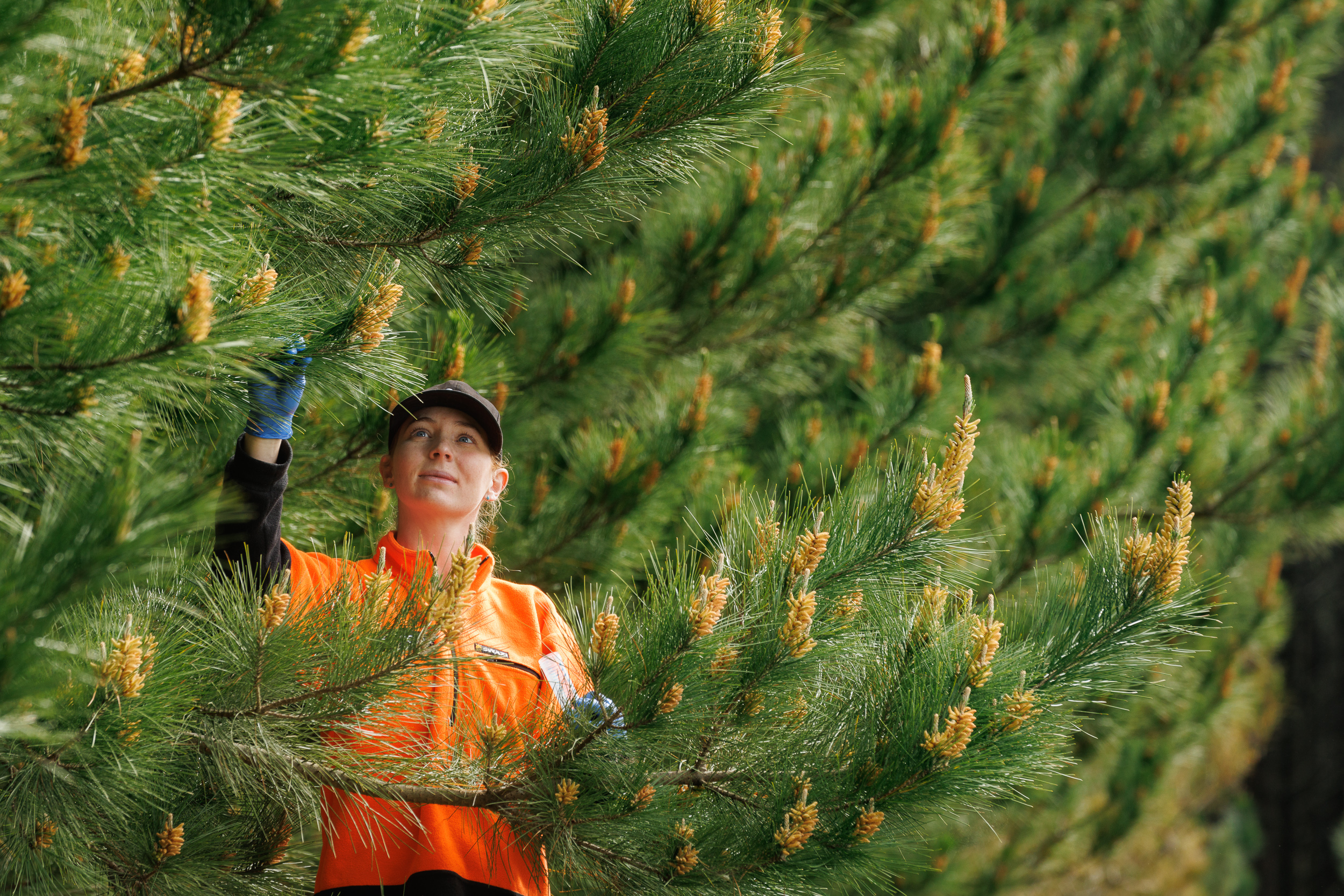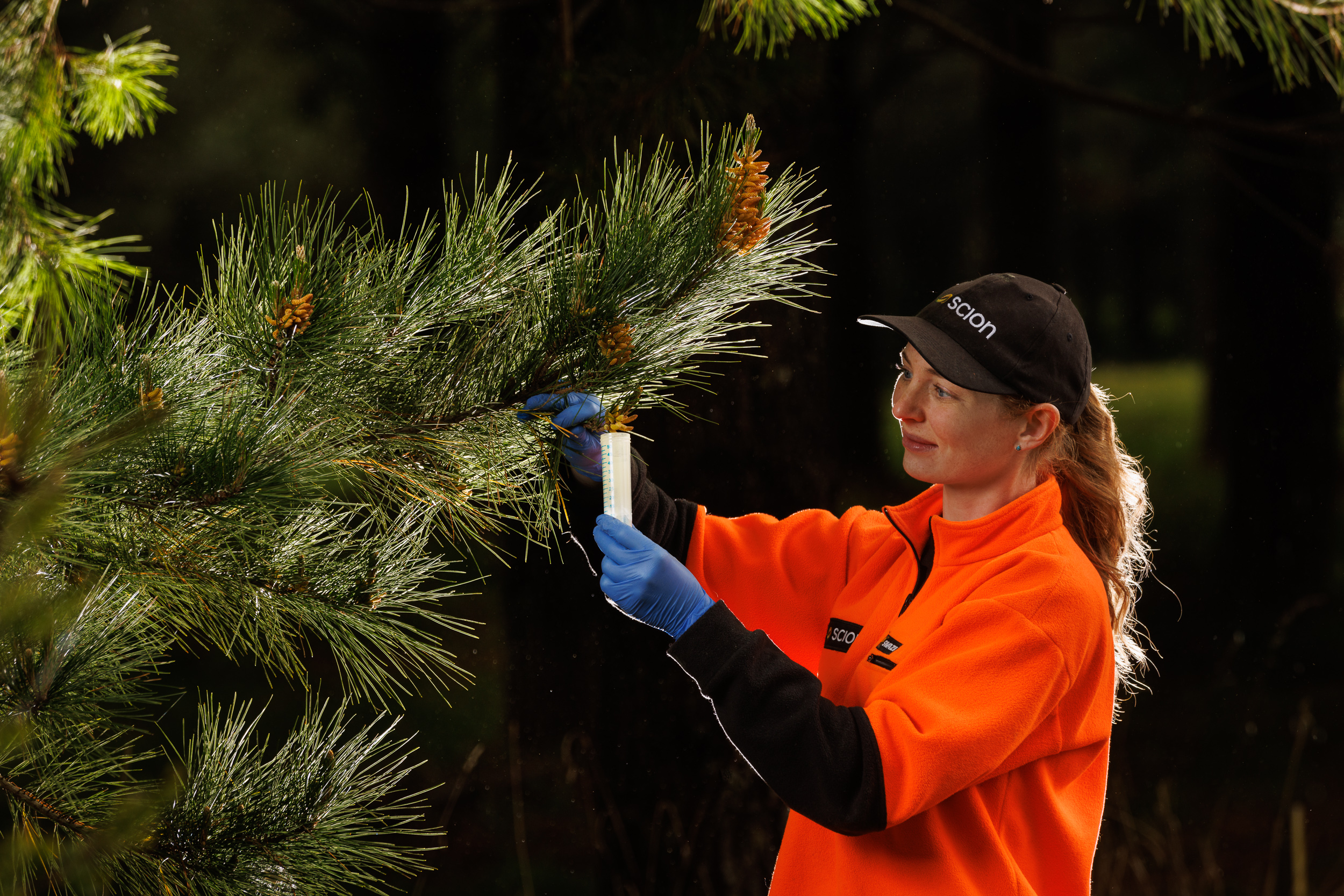Nothing to sneeze at: unique pine pollen microbiome discovered

For immediate release
5 September 2024
Scion scientists have identified a unique microbiome associated with pine pollen, a significant step forward in forest research.
Led by microbiome scientist Lottie Armstrong and Dr Steve Wakelin, the world-first discovery reveals that pine pollen carries specific microorganisms consistently across regions and years. This microbiome may also offer insights into future environmental and allergy research.
As outlined in a newly published paper*, Armstrong has been exploring the idea that pollen is more than just a carrier of plant genetic material.
“Like humans, many plant surfaces are colonised by microbial organisms, and these microbes influence the fitness of the plants. Pine trees and other conifers have been around a lot longer than humans, so we wonder if they have had much longer to form, or co-evolved, microbiome associations.
“Microbiomes may be even more important to trees than they are to us,” she says.
Using environmental DNA-based methods, Armstrong examined the microbiomes on pine pollen from different Pinus radiata trees across Canterbury.

Over two consecutive pollen seasons, researchers found a highly consistent presence of bacterial and fungal microbiomes on pine pollen. The fact that the same microbial species were present on pollen from different trees, and are stable over consecutive years, indicates this pollen microbiome is conserved and may be important for the plant.
“Metabolomic analysis showed that amino acids and sugars on the pollen surface may help maintain this microbiome,” Armstrong adds.
This revelation means that when pollen moves from tree to tree, it’s not just transporting the male genetic material—it’s also carrying a microbiome and all the microbial genome too.

“Microbiomes are essentially hitchhiking on pollen to move from tree to tree,” she says. “It’s a great evolutionary tool for microbes, allowing them to be transmitted into the wider forest, or to play a role in fertilisation, germination or the health and fitness of the next generation of trees.”
This discovery could open up new opportunities for researchers in health-related fields, particularly those involved in allergy research.
“In other plant species, some of the allergenic effects of pollen are influenced by the microbiome,” Armstrong says. “Wouldn’t it be great to have a low-allergy microbiome on our pine trees so that those sensitive to pine pollen might get some relief? This could be a useful breeding target for the next generation of pine trees.”
While this aspect of the research is still unexplored, the potential implications are far-reaching. The findings suggest that by understanding and possibly manipulating the microbiomes of trees, researchers could not only improve forest health and resilience but also help mitigate some of the allergenic effects of pollen on humans.
“This is just the beginning,” said Dr Wakelin. “There’s still a lot we don’t know, but what we’ve discovered here sets the stage for exciting future research. Understanding how trees and their microbiomes interact will not only benefit forestry but may also have broader environmental and public health impacts.”
* note: the paper is currently a pre-print version; it is still undergoing the peer-review process.
